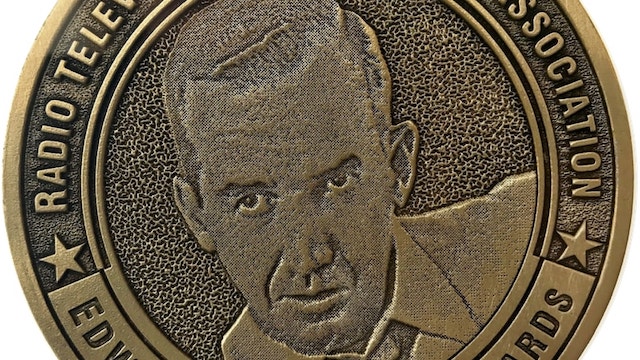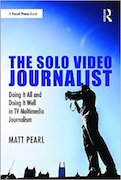A few years ago, the RTDNA added a new category for its esteemed Edward R. Murrow awards in journalism: Excellence in Innovation.
But this year, as I survey the national winners that were announced last week, I see innovation everywhere.
It shows on the local level, thanks to ambitious companies including the one (TEGNA) for which I feel proud to work. It thrives on the national level, where everyone from ESPN to Univision is flexing its storytelling muscles. And it particularly shines in the digital realm, where news organizations need not worry about breaking the rules because they’re creating them.
Over the past few days, I carved out hours to watch this year’s winners. Here are five lessons that have already embedded themselves in my own journalistic mindset:
THE STORY: The legacy of the zero tolerance policy (Univision Noticias Digital)
THE LESSON: If you’re focusing on one person’s story, immerse yourself in it.
Per Univision’s research, more than 2,500 children were separated from their families at the US-Mexico border by American officials. This is part of the US government’s “zero tolerance policy.”
This story stood out because the journalists involved focused on one child and dove deep.
The Univision crew follows a six-year-old Guatemalan girl named Adayanci Pérez as she returns home after three-and-a-half months. The details are harrowing. Pérez returns to school and barely smiles, looking shook around her teachers and classmates. Her family can’t read the PTSD diagnosis she received before her return because it’s in English. Revelations like these fill the nine-minute mini-doc, and they unleash so many questions. They were only uncovered because of the commitment and time investment of all involved.
THE STORY: Dave and Drago (ESPN)
THE LESSON: Own your audience right from the start.
It’s no surprise to find Tom Rinaldi and ESPN in the winner’s slot for sports reporting. Anytime I watch an E:60 or SC Featured piece, like this one about a Fenway Park groundskeeper and his service dog, I always think: what can I learn, even if I don’t have the gear or massive production team?
In this case, we can all learn plenty.
The big lesson here? Captivate immediately. Rinaldi could have saved the reveal about Drago, the dog, until its natural occurrence roughly three minutes into the story. But he eschews that for a set of powerful visuals right away. Watch Drago enter the frame on the first tracking shot, then silhouetted with Dave in the bleachers at Fenway, and you shouldn’t need much convincing to stick around for the next seven minutes.
THE STORY: B/REAL (Bleacher Report)
THE LESSON: When the moment is right, loosen up.
This series isn’t journalism. But it is storytelling. And any journalist can learn from it.
NBA veteran Carmelo Anthony collaborated with a team from Bleacher Report to create the B/REAL series, where star athletes like Chris Paul and Candace Parker visit inspirational but lesser-known athletes. It’s an automatic smile generator.
A series like this shows me the bar for how media is consumed. We in broadcast news aren’t just competing with our fellow stations; we’re competing with digi-doc units, production teams, and crews like this. I love the graphics and post-production work here, as well as the extensive number of shoots and lack of reporter track. Those of us who do longform – but in a local news context – can take notes on how to shake up our format and match what has become expectation.
THE STORY: Huppert Dairy (KARE-TV, Minneapolis/St. Paul)
THE LESSON: You can make a great meal out of details and moments.
I’ve watched this story maybe half a dozen times, and I’m always impressed by its specificity.
This could have easily been an “issue” story: family dairy farms are struggling to survive against the Walmart-ization of their industry. But reporter Boyd Huppert and photojournalists Chad Nelson, Rob Collett, and Kevin Sullivan of KARE-TV found a fitting vehicle to tell this story: the dairy in River Falls, Wis. owned by Huppert’s brother.
This story succeeds for a variety of reasons, but I come back to those specifics. The photographers capture extraordinary details, from a close-up of a cow’s eye to multiple tight shots of the milking process. The entire team produces a piece that lets its moments breathe. Tears are tender; interview pauses are poignant; and the whole thing feels intensely personal. For Huppert, no doubt, it already was.
THE STORY: 11Alive Innovation Entry (WXIA-TV, Atlanta)
THE LESSON: Experiment, and embrace it.
On this one, I’m tipping my non-existent cap to my colleagues.
I work in the 11Alive newsroom, and I appreciate the way our managers push us to innovate. At least, I thought I appreciated it. But I don’t know that I fully grasped the scope of our efforts until I watched our Murrow entry for innovation. I was thrilled that my At The Table ATL food series made the cut, but I was more thrilled to see it surrounded by equally – if not more – ambitious efforts from around the building.
Perhaps I have just become inured to our culture of innovation. Perhaps it doesn’t blow me away as much as it should. But when I see it condensed into one 30-minute mash-up, I am reminded of how far we’ve flown.
The Solo Video Journalist is available for purchase. You can find it on Amazon, Barnes & Noble, and the publisher’s web site.
Matt Pearl is the author of the Telling the Story blog and podcast. Feel free to comment below or e-mail Matt at matt@tellingthestoryblog.com. You can also follow Matt on Facebook and Twitter.

